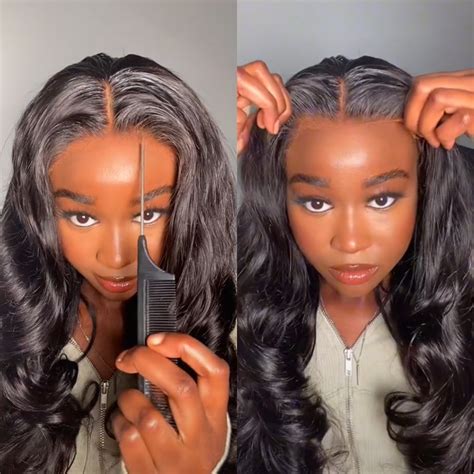Ancient Origins and Cultural Significance
The earliest known black hair wigs date back around 5,000-7,000 years, discovered in ancient Egyptian tombs. These wigs, made from human or animal hair, served both aesthetic and practical purposes, protecting the wearer’s head from the scorching sun and providing a sense of status and individuality.

In ancient Greece and Rome, black wigs were worn by women and men alike, often as a sign of wealth and fashion. Over time, wigs became an integral part of religious ceremonies, theatrical performances, and cultural festivals.
The Role of Wigs in Fashion and Identity
During the Middle Ages, black hair wigs were largely associated with royalty and nobility. In the 17th and 18th centuries, elaborate wigs made of horsehair and other materials became popular among the elite in Europe, symbolizing power, wealth, and social standing.
In the 20th century, black hair wigs regained popularity as a fashion statement, particularly among African Americans seeking to embrace their natural hair texture. Today, black hair wigs continue to be a versatile and transformative accessory, used to enhance beauty, express creativity, and protect natural hair.
- Scalp Sensitivity: Black hair wigs can protect the scalp from harmful chemicals, heat damage, and environmental factors.
- Hair Loss and Thinning: Wigs provide an instant and effective solution for people experiencing hair loss due to medical conditions, stress, or aging.
- Versatility and Convenience: Wigs offer endless styling options without the commitment or upkeep of dyeing or chemically treating natural hair.
- Protection from Sun and Cold: Wigs can shield the scalp and natural hair from UV rays and extreme temperatures.
- Time-Saving: Wigs eliminate the need for lengthy styling routines, saving time and effort.
- Fashion and Confidence: Wigs boost confidence by allowing individuals to experiment with different looks and enhance their appearance.
- Comfort and Breathability: Modern wigs are designed with breathable materials and comfortable constructions to ensure all-day wear.
- Cost-Effective: Compared to professional hair treatments and styling, wigs offer a cost-effective way to enhance hair appearance.
- Customizable Options: Wigs can be tailored to specific hair textures, lengths, and colors, providing personalized solutions for individual needs.
- Cultural and Religious Significance: Wigs play an important role in cultural and religious traditions, offering representation and a sense of belonging.
- Self-Expression and Creativity: Wigs empower individuals to explore their unique style and express themselves creatively.
- Confidence and Empowerment: Wigs can boost confidence by enhancing hair appearance and overcoming insecurities.
- Convenience and Time-Saving: Wigs offer quick and hassle-free styling solutions, saving time and effort.
- Hair Protection and Maintenance: Wigs help protect natural hair from damage and reduce the need for frequent styling.
- Cost and Value: Wigs provide a cost-effective and durable solution for achieving desired hair looks without expensive treatments.
- Cultural and Religious Connection: Wigs can strengthen connections to cultural and religious traditions that value particular hairstyles.
- Special Occasions and Events: Wigs offer versatile styling options for special events, weddings, and photoshoots.
- Identify Your Hair Type and Texture: Determine whether you have curly, coily, or straight hair to select a wig that matches your natural texture for a seamless blend.
- Consider Hair Length and Volume: Choose a wig that meets your desired length and volume, whether you prefer a short bob or long, flowing locks.
- Choose the Right Material: Opt for wigs made from human hair, synthetic fibers, or a blend of both, based on desired quality, durability, and price.
- Match Your Skin Tone: Select a wig that complements your skin tone to create a natural and harmonious appearance.
- Shop from Reputable Brands: Research and purchase wigs from reputable brands with a proven track record of quality and customer satisfaction.
| Wig Type | Description | Key Features | Pros | Cons |
|---|---|---|---|---|
| Human Hair | Made from real human hair | Natural look and feel, can be styled with heat | High quality, customizable | Expensive, higher maintenance |
| Synthetic Hair | Made from synthetic fibers | Variety of colors and styles, affordable | Heat-resistant, low maintenance | Less natural appearance, may not last as long |
| Remy Hair | A type of human hair wig where the hair cuticles are aligned | Reduced tangling, silky smooth texture | High quality, durable | More expensive than regular human hair wigs |
| Lace Front Wig | A wig with a lace front that creates the illusion of natural hair growth | Realistic hairline, versatile styling options | Can be delicate, requires maintenance | |
| Full Lace Wig | A wig made entirely of lace, providing the most natural-looking and customizable hairline | Can be styled in any direction, maximum versatility | Expensive, highest maintenance |
| Benefit | Description | Pain Point Addressed |
|---|---|---|
| Scalp Protection | Shields the scalp from harmful chemicals, heat damage, and UV rays | Scalp Sensitivity |
| Hair Loss Concealment | Provides a solution for individuals experiencing thinning hair or baldness | Hair Loss and Thinning |
| Sty |
